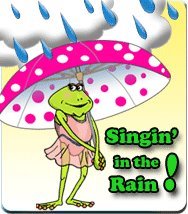
Has this ever happened to you? It’s 3pm and you’re ready to wow your student with the fantastic piano lesson you have carefully planned. You can just imagine the joy on her face when you announce the special song that she will be learning today. You hear a knock on the door, open it and your student walks in with a frown on her face. She won’t speak to you, and when you look at her mom walk in she has a frown on her face too! The mom informs you that the child got in trouble at school and it is clear that the child is guilty as charged.
At times like this it may seem that there is no hope for redirecting this family so that you can have a great lesson, but the piano teaching genius in you knows better! Now is the time to abandon whatever plans you had prior to the student’s arrival and pay attention to this emergency situation. (Yes, it is an emergency! ) It is up to YOU to turn this situation around for everybody involved.
The guiding principle you will use in this situation is one that was shared recently on the South Florida Orff Blog about how to be a 21st century teacher:
Make it (your lesson) REAL LIFE relevant!
With that said, here are 6 steps you can take to rescue your lesson:
1. Make them laugh! Your number one goal is to first make everybody in the room laugh as quickly as possible. This will break down any barriers and help them refocus. You could say in a horrified voice something like, “What you just told me makes me hear this music…” (That’s when you go to the piano and play the famous notes of Beethoven’s 5th)
2. Offer a Solution – Your new goal is to get the student to stop worrying about the problem and focus on what she can do to have a successful lesson. You can suggest that the two of you write a song about the situation.
3. Invite The Student To The Piano – You will need to help everybody remember why they came – it’s a piano lesson!
4. Ask questions – Should the song have a happy sound or a sad sound? What kind of scale can we use to make that sound? What words do we need to say in the song?
5. Write It Down – Help your student write out the new song complete with a title. You can take the time to explain some theory concepts like treble clef, bass clef, how to notate melodic and harmonic sounds. Keep it simple and easy though. Even allow the student to just write out the note names.

6. Take A Picture – Empower your student to have a better day at school the following day by taking a picture of her holding the “sheet music” for the new song. Tell her that she can print the picture and give it to her teacher the next day. Employ humor once again by allowing her to use fun facial expressions to show how sorry she is about what happened. Let her choose which picture really shows how she feels.
Can you remember a time when your student and parent showed up to the lesson upset about school? Tell us about it in a comment below!







